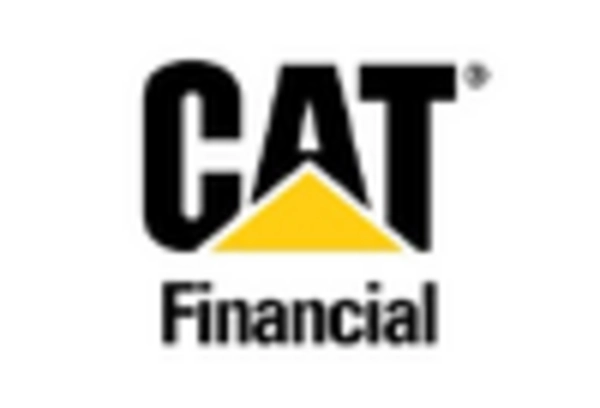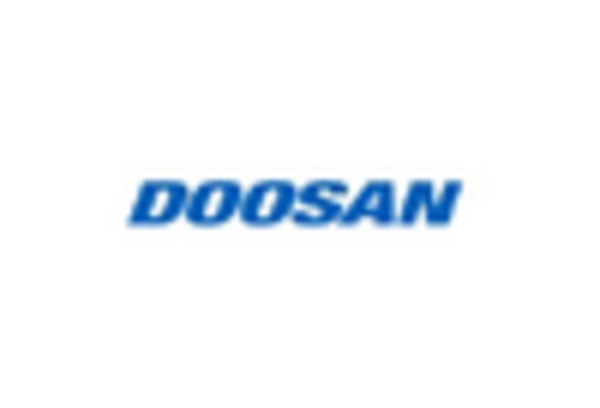Growing Focus on Safety Regulations
The Heavy-Duty Telehandler Machines Market is increasingly shaped by a growing focus on safety regulations within the construction and industrial sectors. As safety standards evolve, companies are compelled to invest in equipment that meets stringent safety requirements. Heavy-duty telehandlers, designed with advanced safety features such as stability monitoring systems and operator protection mechanisms, are becoming essential assets for businesses aiming to comply with these regulations. This heightened emphasis on safety is likely to drive demand for telehandlers, with market forecasts indicating a potential increase of 5% in sales as companies prioritize worker safety and operational reliability. The alignment of safety with equipment choice is thus a pivotal driver in the Heavy-Duty Telehandler Machines Market.
Increased Demand in Diverse Sectors
The Heavy-Duty Telehandler Machines Market is experiencing increased demand across various sectors, including agriculture, construction, and logistics. The versatility of telehandlers makes them indispensable for tasks such as lifting, moving, and placing materials in challenging environments. In agriculture, for instance, the need for efficient material handling solutions is driving the adoption of heavy-duty telehandlers, with market analysts estimating a growth rate of 4% in this segment alone. Similarly, the construction industry is leveraging telehandlers for their ability to navigate rough terrains and tight spaces, further propelling market growth. This cross-sector demand is likely to sustain the momentum of the Heavy-Duty Telehandler Machines Market in the coming years.
Rising Infrastructure Development Projects
The Heavy-Duty Telehandler Machines Market is significantly influenced by the rising number of infrastructure development projects worldwide. Governments and private entities are investing heavily in infrastructure to support economic growth, which in turn drives the demand for heavy-duty telehandlers. These machines are essential for various construction activities, including road building, bridge construction, and urban development. As infrastructure projects expand, the need for efficient material handling solutions becomes paramount, suggesting a potential market growth of approximately 7% in the coming years. This trend underscores the critical role that heavy-duty telehandlers play in facilitating large-scale construction efforts.
Shift Towards Sustainability in Construction
The Heavy-Duty Telehandler Machines Market is witnessing a notable shift towards sustainability, particularly within the construction sector. As environmental regulations become more stringent, companies are increasingly seeking equipment that minimizes carbon footprints. Heavy-duty telehandlers equipped with eco-friendly engines and hybrid technologies are gaining traction, as they align with the industry's sustainability goals. This trend is further supported by government incentives aimed at promoting green construction practices. Consequently, the demand for sustainable heavy-duty telehandlers is expected to rise, potentially leading to a market expansion of around 6% annually. This shift not only reflects a commitment to environmental stewardship but also positions companies favorably in a competitive landscape.
Technological Advancements in Heavy-Duty Telehandler Machines
The Heavy-Duty Telehandler Machines Market is experiencing a surge in technological advancements that enhance operational efficiency and safety. Innovations such as telematics, which provide real-time data on machine performance, are becoming increasingly prevalent. These technologies allow operators to monitor fuel consumption, maintenance needs, and overall productivity, thereby reducing operational costs. Furthermore, advancements in automation and remote control capabilities are likely to improve the usability of telehandlers, making them more appealing to a broader range of industries. As a result, the integration of cutting-edge technology is expected to drive growth in the Heavy-Duty Telehandler Machines Market, with projections indicating a compound annual growth rate of approximately 5% over the next few years.


















Leave a Comment